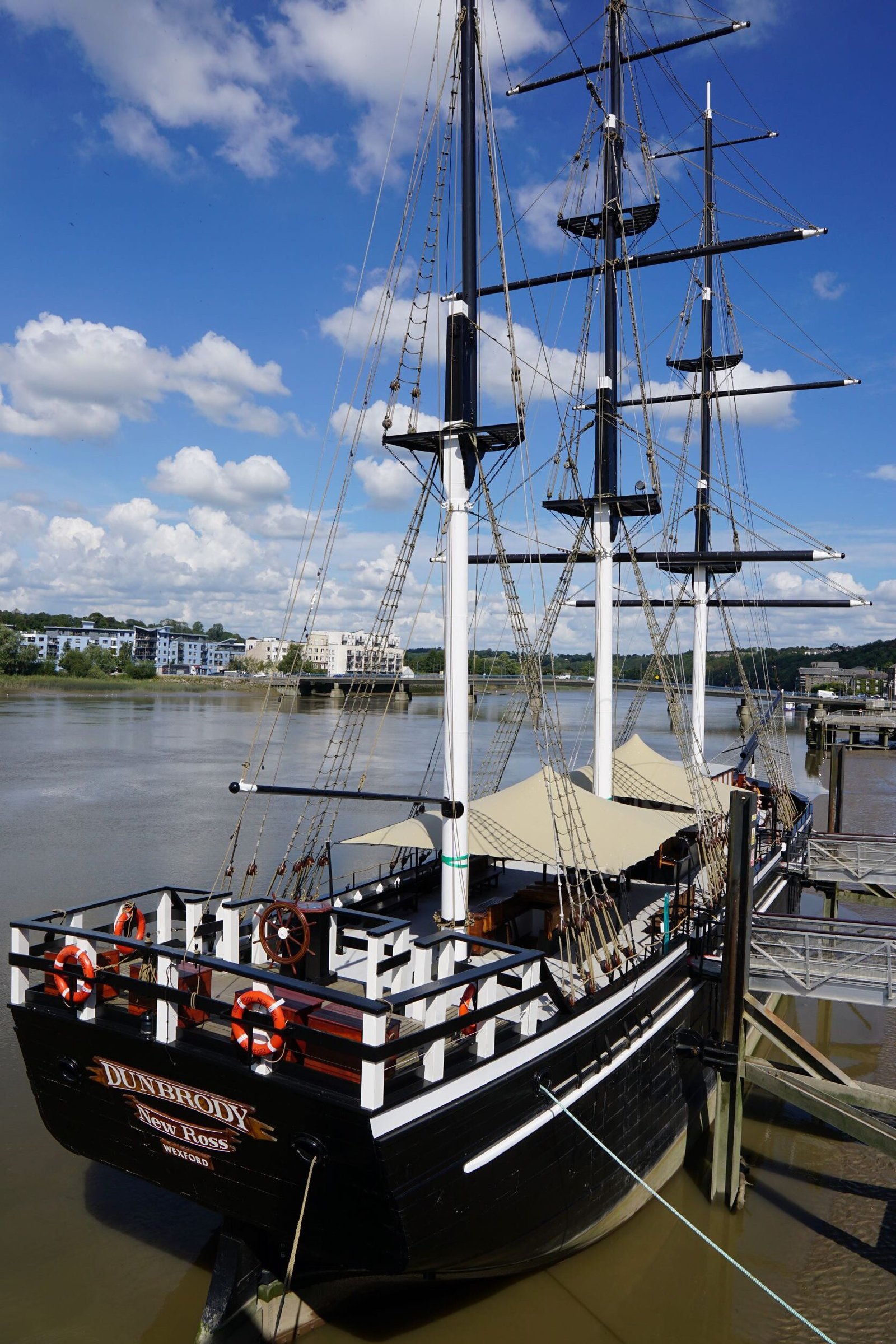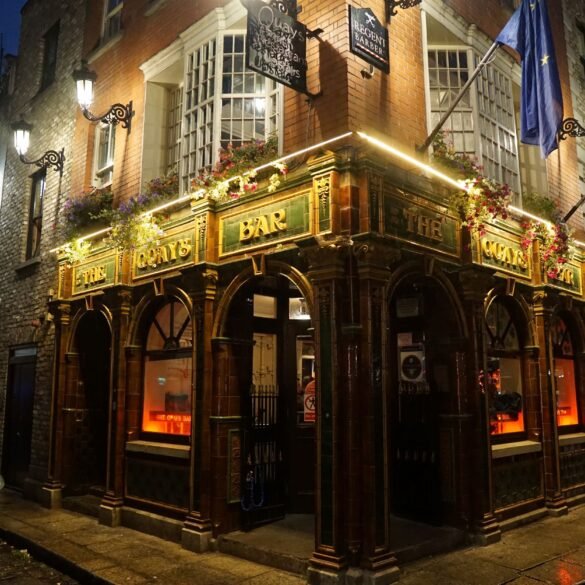We stood in the queue at the Embarkation area, clutching our boarding passes. Through the windows, we could see Dunbrody, a three-masted sailing vessel, moored at the quayside, its wooden sides gleaming in the sun. A woman, dressed in a dark shawl and clutching a large bag, rushed past us mumbling something about her fare.
“Welcome to Ireland!” a man in a sailing hat said with a thick Irish accent, “Where are you from?”
“Chicago!” I said and waved my Passengers’ Contract Ticket, “And now apparently going back home… well, to Savannah, Georgia!”
Everyone around me laughed.
“Welcome to the Dubrody Famine Ship and Irish Emigrant Experience!” our guide said and motioned for us to follow him into the museum.
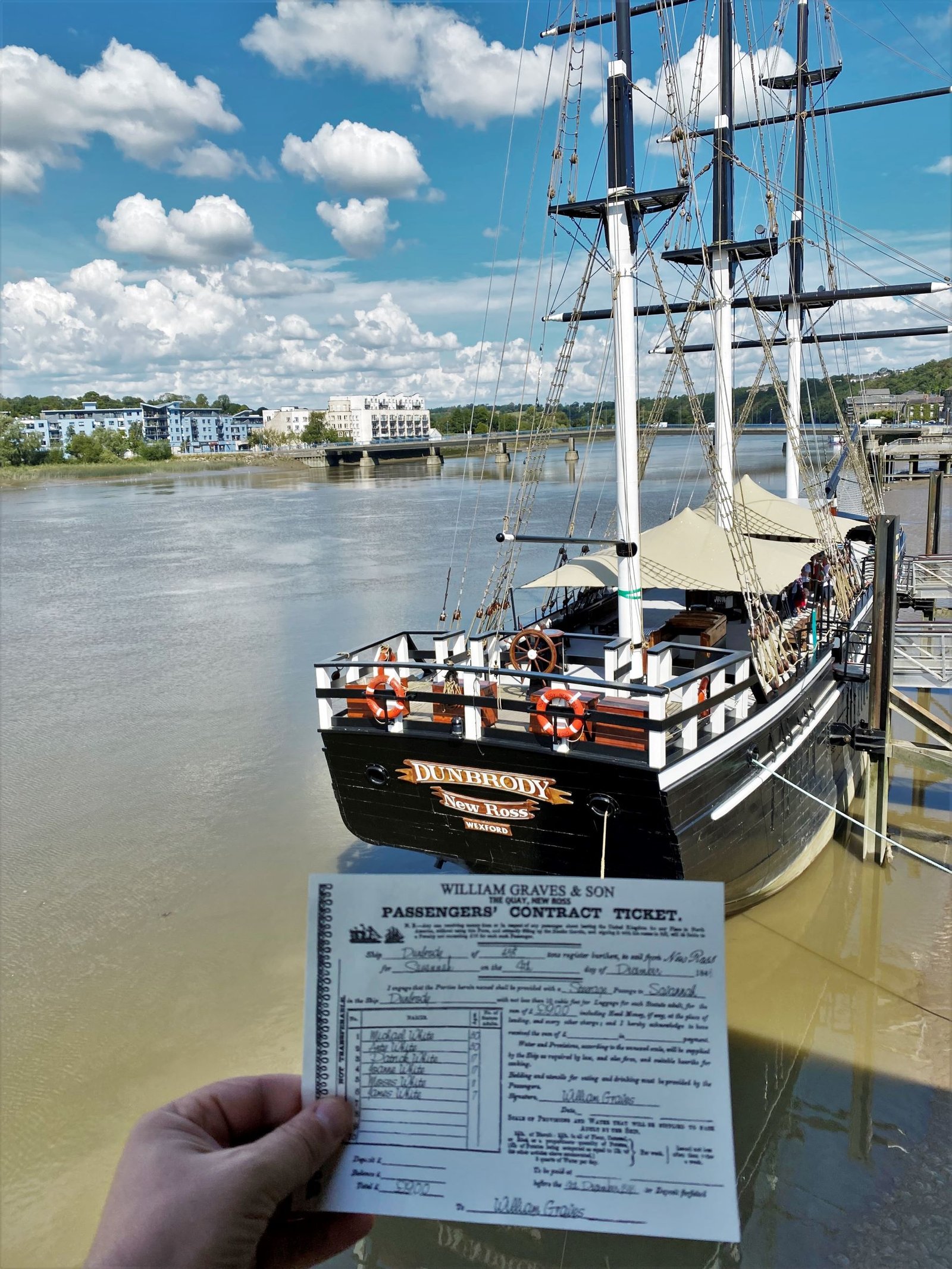
This was not just a run-of-the-mill museum. As we quickly realized from costumed actors and audio recordings, this was an interactive illusion carefully planned out to make you feel like an emigrant passenger in 1846, getting ready for a dangerous transatlantic journey to a new life in the new world. As we moved through the Departure Hall, we learned about the potato famine and its effect on poor landless farmers, who had to decide between starvation and emigration.
One interesting fact left a lasting impression. These ships initially served to import lumber and bat guano fertilizer (basically bat poop) from Peru to Ireland. The fungus-like organism that infected potato crops most likely arrived in bat guano and caused these same ships that brought the plight to Ireland, to carry thousands of impoverished refugees, risking all their possessions, and possibly lives, out of Ireland.
After watching a short introductory video, we finally boarded the ship. After descending into the ship’s hold, we found darkness, 6x6 sleeping berths meant to accommodate 4 people, toilet buckets, and plastic rats, to add some realism to an already horrific situation. If we were really back in 1846, this steerage accommodation would also be full of the unbearable stench of 300 men, women, and children, some with cholera, typhus, smallpox, or dysentery.
Our guide let us know that the reason that it was specifically the Dunbrody ship that was replicated and used for this exhibit, was that Dunbrody was known for its very low casualty rate. Unlike other ships with despicable conditions and malevolent crew, nicknamed “coffin ships”, Dunbrody had a compassionate and knowledgeable captain who quickly recognized signs of illness and quarantined the sick. He even went as far as forcing all passengers and crew to drag their straw “mattresses” out of hold every day to shake out all the lice and dirt overboard.
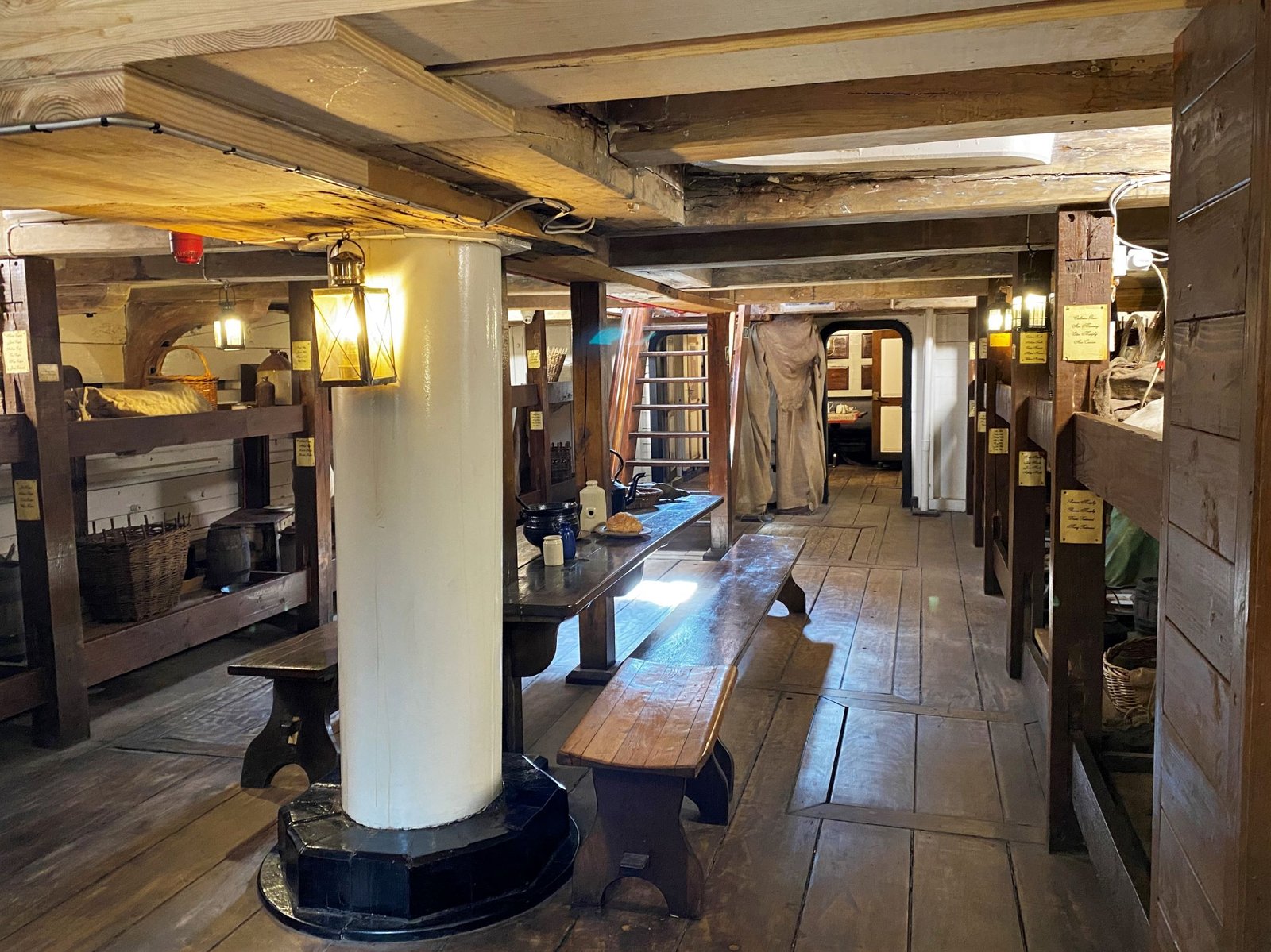
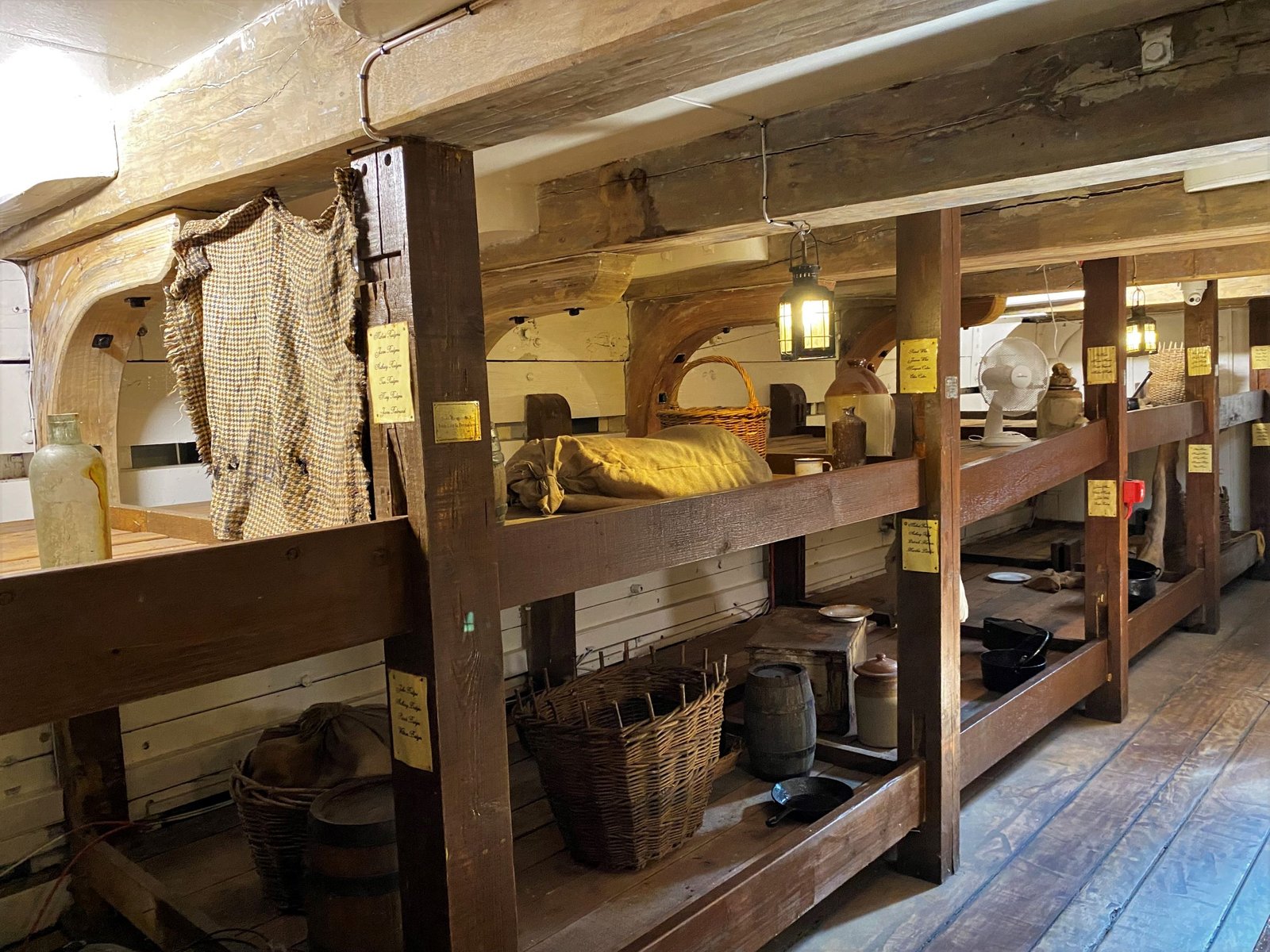
As we sat around a large table, with plastic replicas of bread loaves and … more rats, other guides in period costumes dressed as fellow passengers came to share a few of their personal stories and even engaged us in conversation. Mrs. O’Brien, a mother of six, all crammed into a berth in the bow of the ship, lamented leaving their home and worried about her family’s fate, pointedly asking everyone if we had family in America who could possibly employ her or her husband. She revealed that they only got weekly food rations on the ship and the journey was about 50 days long. Shortly afterward, a first-class passenger, Mrs. White, bemoaned the quality of her daily dinners and inspected the hands of an eleven-year-old boy in our group, trying to gauge if he was worth employing in the store she was planning on opening in Buffalo, New York.
After we explored the crew’s quarters, the captain’s cabin, the first-class passengers’ accommodations, and the cargo hold, we exited the ship and found that the path led us to the New World of Savannah, Georgia. Photographs and posters on the walls told us stories about Irish immigrants adjusting to their new lives and how many did not escape death and poverty across the ocean.
The next room was dedicated to celebrating the descendants of the Irish immigrants, those who excelled due to many generations working hard to establish themselves and prosper. Portraits decorated a long wall – multiple Kennedys, Henry Ford, Georgia O’Keeffe, Grace Kelly, and hundreds of Irish Americans who made significant contributions to culture, education, politics, and science in the U.S.
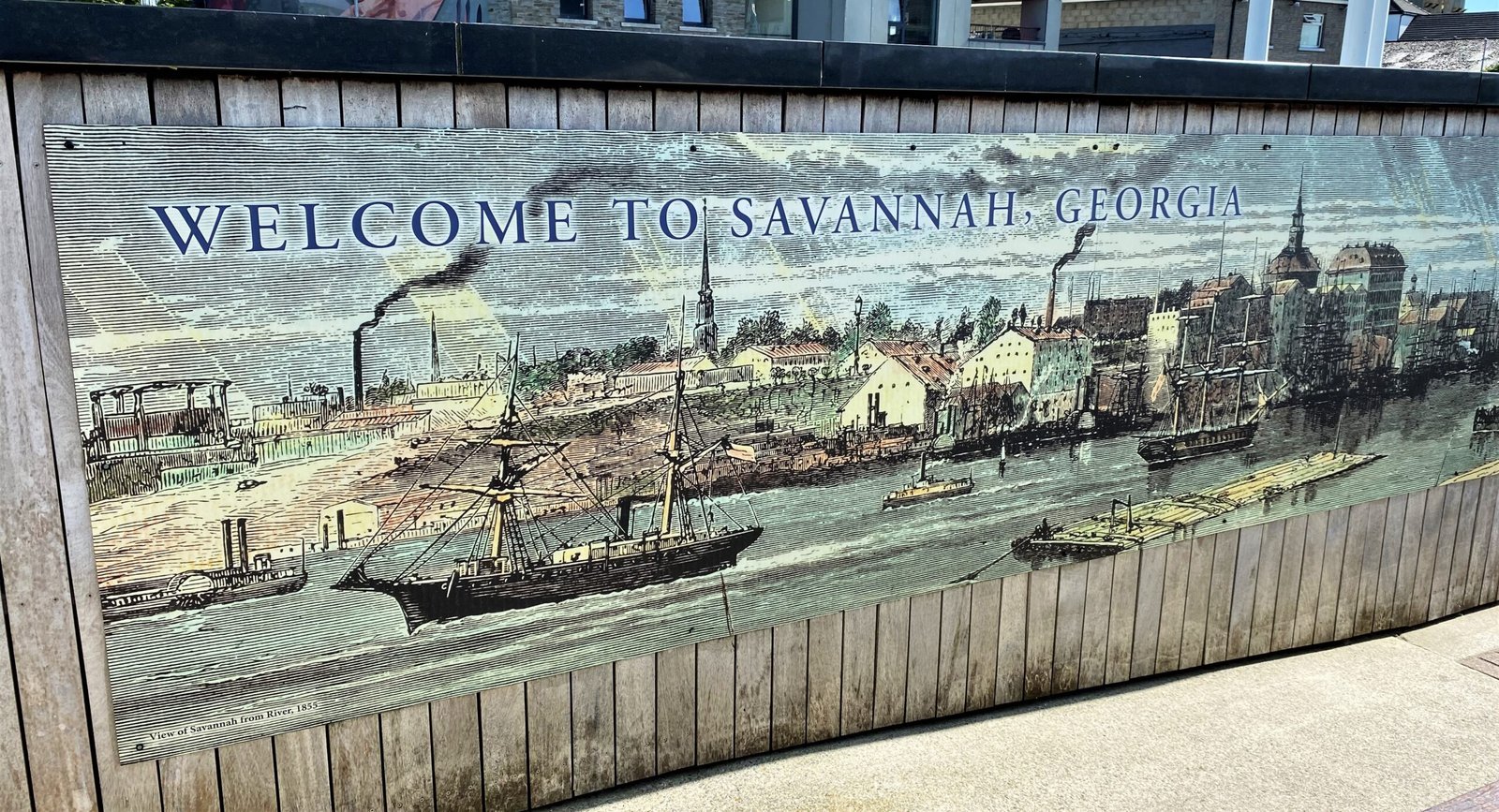
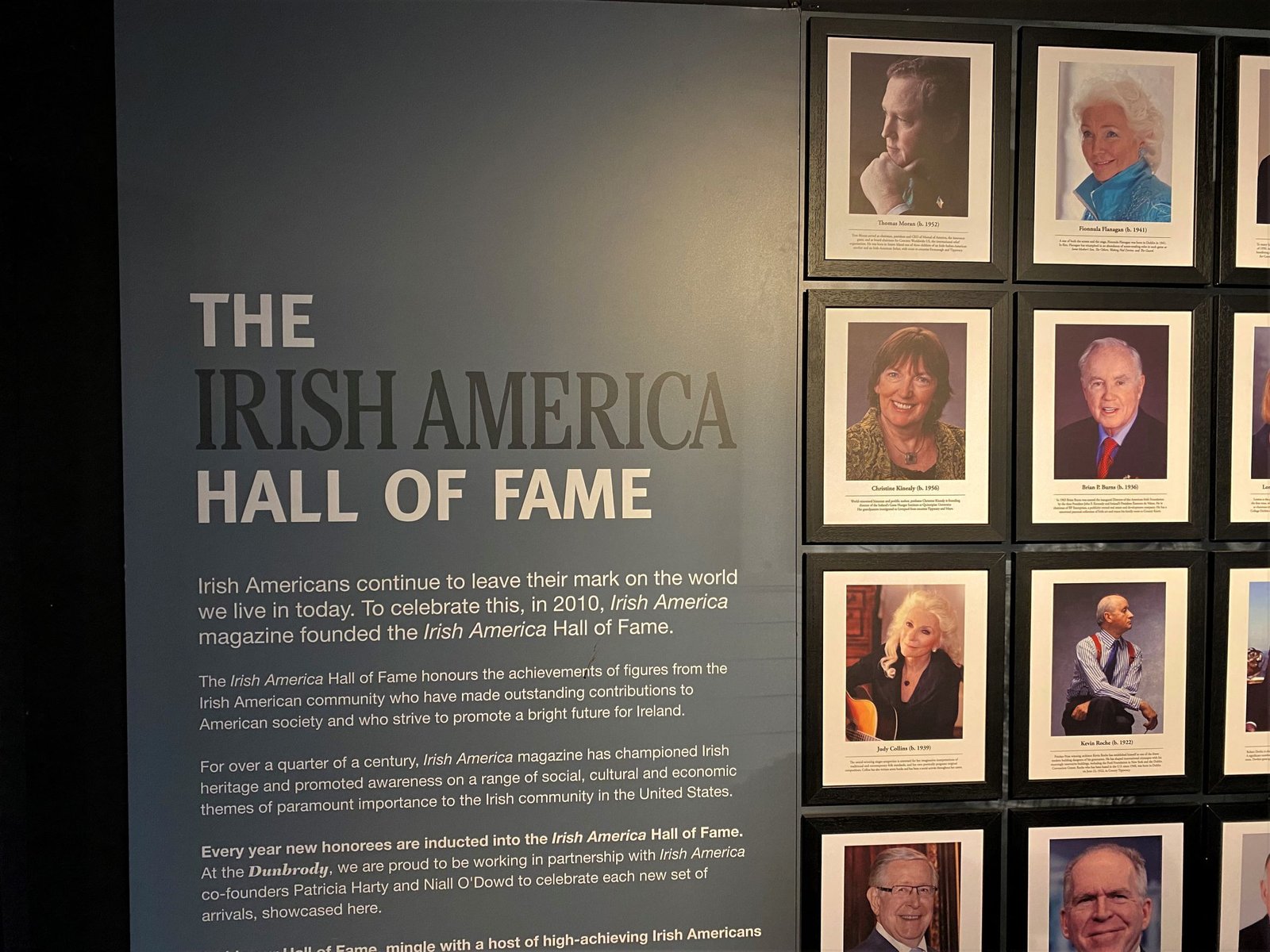
“Hold on…” I said, “Where is Conan O’Brien?
“Hold on…” Victor said, “Where is Barack Obama?”
We stared at each other. I confirmed via Google that Obama’s great-great-great grandfather did in fact arrive in New York in one of these “coffin ships”. Conan O’Brien needed no confirmation.
We searched through the sea of portraits, eventually finding both Clintons and Joe Biden, but still no Obama.
“I am getting to the bottom of this!’ I announced and ran towards the gift shop, where our guide was getting ready for the next tour group.
I explained our predicament and he followed me into the “American Hall of Fame” Room.
“These portraits probably haven’t been updated for years…” He speculated.
“But Joe Biden is right there!” I retorted, “And he is listed as a senator and a vice president. A vice-president to whom?”
“Well, we need to get to the bottom of this!” the guide exclaimed and ran to get the manager.
This was getting serious.
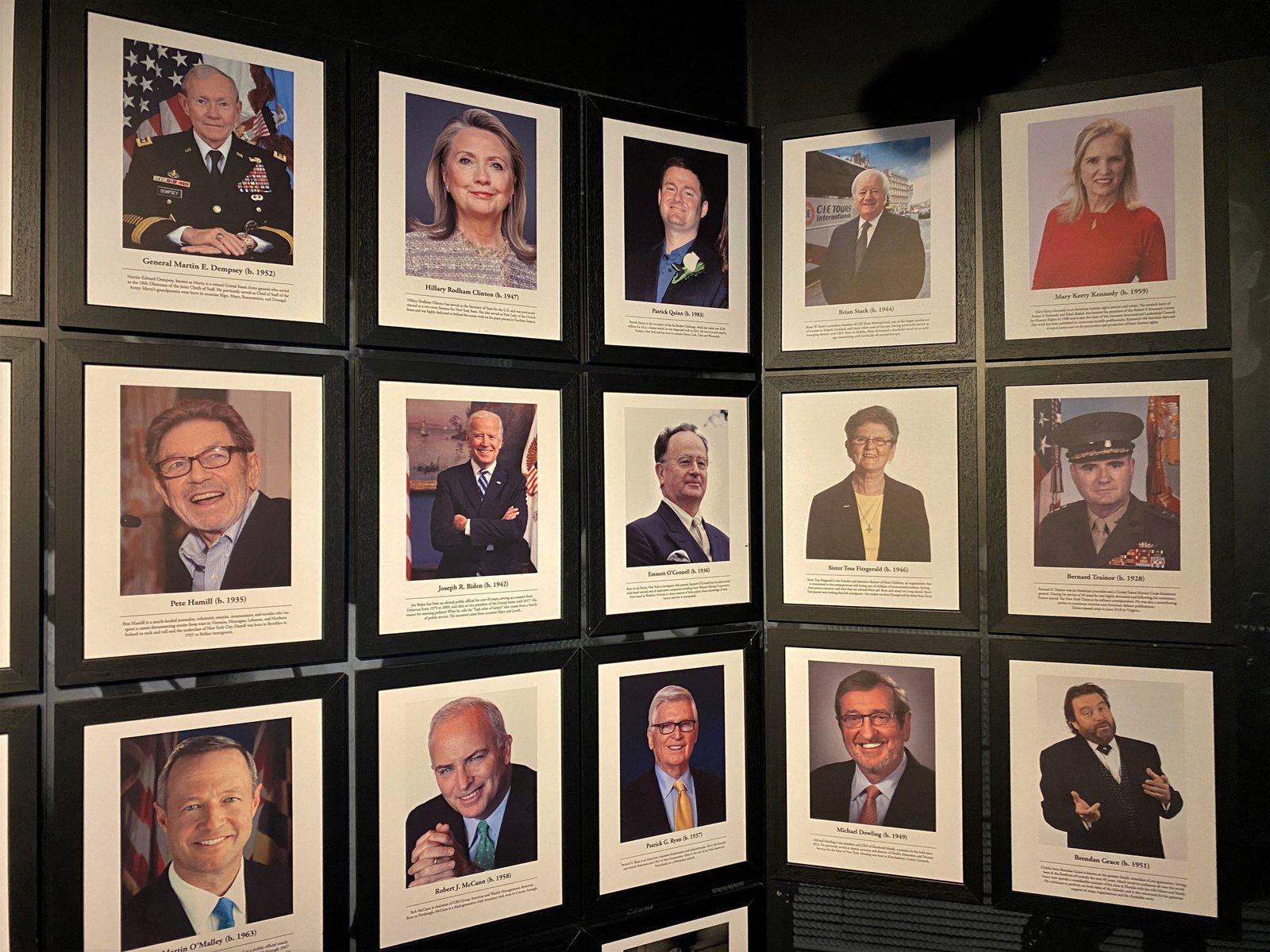
The manager came. She turned out to be the actress who played Mrs. White, the first-class passenger. She was still dressed in her period clothes, and it was very strange talking to her “out of character”. I halfway expected that she was about to demand that Victor unloads her baggage from the ship.
She quickly scanned the wall of photographs and snapped her fingers at the realization, “He must have not accepted our invitation!”
Victor and I stared at her, quizzically.
“We send out invitations, and if the person or their representative arrives to accept the honor, only then do we have a ceremony and induct their portrait into the Hall of Fame!”
She then went through the photographs, pointing out everyone whom she personally met, “Oh, he was a darling! So nice! But this one… oof… so stuck up, terrible to deal with… Oh, but these two, they were great!”
We thanked her and chatted a bit until she and the tour guide had to go, to usher the next group of bewildered “passengers” through their emigration journey.
So, Barack Obama and Conan O’Brien, if you are reading this, you need to come to New Ross, Wexford County, Ireland, and accept your “American Hall of Fame” nomination. And take the guided tour, while you are at it, it’s fantastic.
